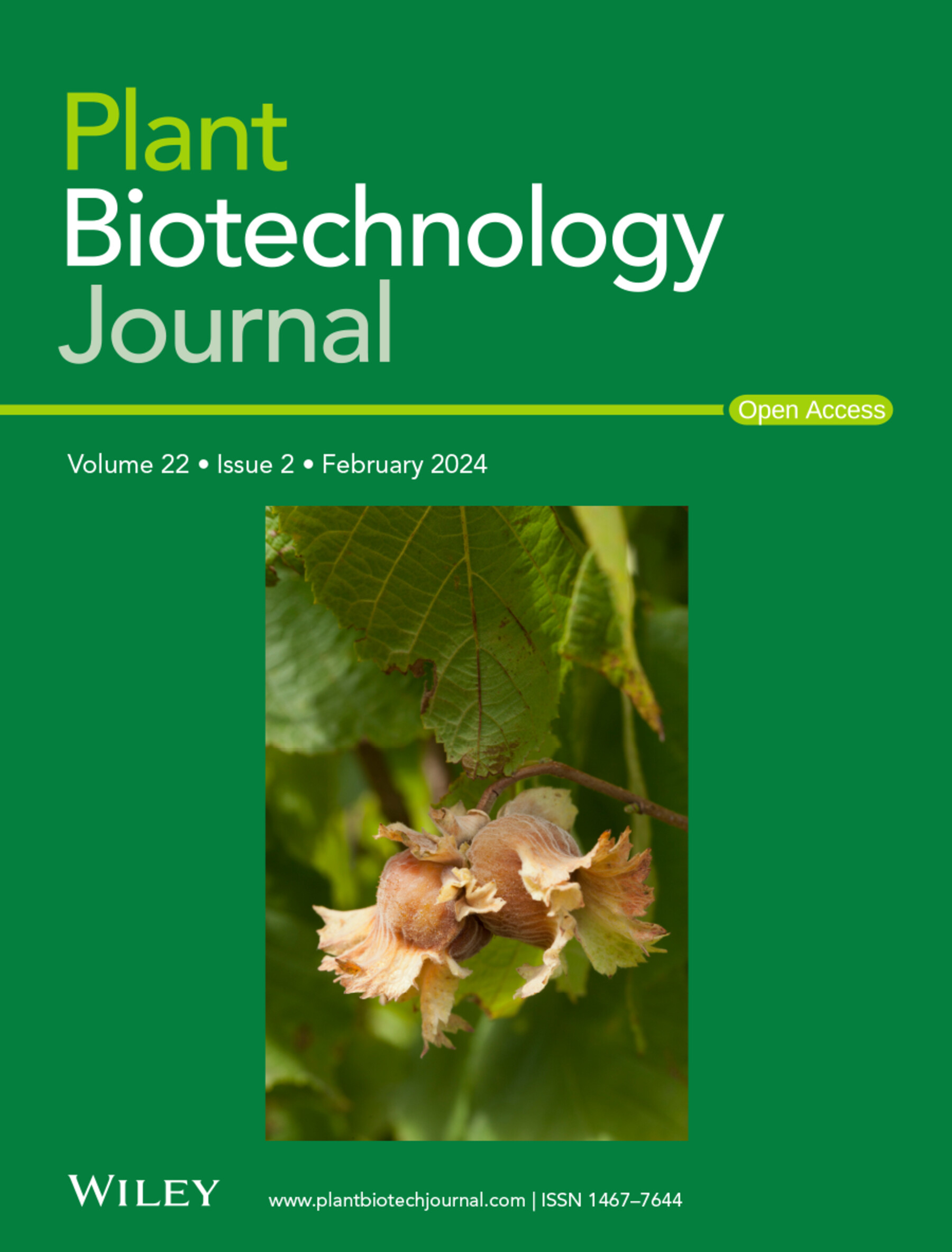Knocking out the carboxyltransferase interactor 1 (CTI1) in Chlamydomonas boosted oil content by fivefold without affecting cell growth
IF 10.1
1区 生物学
Q1 BIOTECHNOLOGY & APPLIED MICROBIOLOGY
引用次数: 0
Abstract
The first step in chloroplast de novo fatty acid synthesis is catalysed by acetyl-CoA carboxylase (ACCase). As the rate-limiting step for this pathway, ACCase is subject to both positive and negative regulation. In this study, we identify a Chlamydomonas homologue of the plant carboxyltransferase interactor 1 (CrCTI1) and show that this protein interacts with the Chlamydomonas α-carboxyltransferase (Crα-CT) subunit of the ACCase by yeast two-hybrid protein–protein interaction assay. Three independent CRISPR-Cas9 mediated knockout mutants for CrCTI1 each produced an ‘enhanced oil’ phenotype, accumulating 25% more total fatty acids and storing up to fivefold more triacylglycerols (TAGs) in lipid droplets. The TAG phenotype of the crcti1 mutants was not influenced by light but was affected by trophic growth conditions. By growing cells under heterotrophic conditions, we observed a crucial function of CrCTI1 in balancing lipid accumulation and cell growth. Mutating a previously mapped in vivo phosphorylation site (CrCTI1 Ser108 to either Ala or to Asp), did not affect the interaction with Crα-CT. However, mutating all six predicted phosphorylation sites within Crα-CT to create a phosphomimetic mutant reduced this pairwise interaction significantly. Comparative proteomic analyses of the crcti1 mutants and WT suggested a role for CrCTI1 in regulating carbon flux by coordinating carbon metabolism, antioxidant and fatty acid β-oxidation pathways, to enable cells to adapt to carbon availability. Taken together, this study identifies CrCTI1 as a negative regulator of fatty acid synthesis in algae and provides a new molecular brick for the genetic engineering of microalgae for biotechnology purposes.求助全文
约1分钟内获得全文
求助全文
来源期刊

Plant Biotechnology Journal
生物-生物工程与应用微生物
CiteScore
20.50
自引率
2.90%
发文量
201
审稿时长
1 months
期刊介绍:
Plant Biotechnology Journal aspires to publish original research and insightful reviews of high impact, authored by prominent researchers in applied plant science. The journal places a special emphasis on molecular plant sciences and their practical applications through plant biotechnology. Our goal is to establish a platform for showcasing significant advances in the field, encompassing curiosity-driven studies with potential applications, strategic research in plant biotechnology, scientific analysis of crucial issues for the beneficial utilization of plant sciences, and assessments of the performance of plant biotechnology products in practical applications.
 求助内容:
求助内容: 应助结果提醒方式:
应助结果提醒方式:


